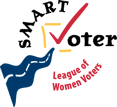 |
|
||
Judicial Efficiency and TechnologyBy Jamie Jacobs-MayCandidate for Judge of the Superior Court; Office 3 | |||
This information is provided by the candidate | |||
In order to meet the challenge of effectively and efficiently processing escalating numbers of cases with fewer resources, courts must: 1) consolidate and restructure, 2) tap the benefits of new technologies, and 3) appropriately use alternative models of litigation (Alternative Dispute Resolution).In the coming decades, case filings are expected to outpace population growth. In other words, courts will be required to process more cases than ever -- but with fewer resources. In 1992, the California Legislature responded to this crisis and passed laws requiring trial courts to coordinate and consolidate. Although many counties have had difficulty implementing these laws, I'm pleased that, during my term as Presiding Judge, Santa Clara County Courts did reach a consolidation agreement that brought our courts into compliance with these mandates. We combined administrative offices and even the duties of Municipal and Superior Court judges and took a significant step toward a more efficient system. Technology can help us take another significant step. Electronic filing of court documents, paperless court files, legal briefs submitted on CD-ROMs, and appearances in court by telephone are examples of the kinds of innovation that technology can bring to our courts to help them function more cost-effectively. In the electronic courtroom of the future, computer monitors will make blackboards outmoded. Computer-generated animation will make VCRs obsolete. Case exhibits won't be retrieved by the frantic fumble through piles of paper, but by the calm click of a computer mouse. For the most part, current advances focus on presenting evidence to jurors in more sophisticated ways, thus making often mind-numbing trials more captivating. But broader visions of courtroom technology include linking everyone involved in wholly new ways. To capitalize on the benefits of technology, judges must undertake the training we need to understand and effectively use the new technologies, and then work to effectively implement them in our courtrooms. A third strategy for improving judicial efficiency involves alternative models to the traditional approach to litigation -- particularly in issues involving civil and family law. Traditional litigation is very expensive and forces the parties to give up control over decision-making to a third person -- either a judge or a jury. However, Alternative Dispute Resolution (ADR) -- mediation, arbitration, and neutral evaluation -- is often more efficient, less lengthy, and, therefore, less expensive. In addition, it gives the parties greater control in the decisions, and thereby increases their ultimate satisfaction and compliance with the outcome. In mediation, the parties have full control by reaching a resolution on their own, facilitated by an outside professional -- the mediator. Arbitration allows the parties to put on their own mini-case, which the arbitrator then resolves. In binding arbitration, the parties have agreed in advance to be bound by the decision of the arbitrator; in non-binding arbitration, they have not. Neutral evaluation gives the parties the benefit of a neutral third person's assessment, which can help the parties resolve their differences on their own, without resorting to the courts. Santa Clara County courts are now hiring an ADR director, who will recommend cases on the civil docket for ADR. By encouraging parties to use ADR, we expect that cases will resolve earlier, thus lowering costs, increasing efficiencies, and improving satisfaction with "the system." As a complement to ADR, judges can be enormously helpful in resolving disputes. My own philosophy is to strongly encourage settlement discussions and -- with the agreement of the parties -- to actively participate as a "settlement judge." |
Candidate Page
This Race
|| June 1998 Home (Ballot Lookup)
|| County Election Links
About Smart Voter
Created from information supplied by the candidate: May 30, 1998 09:30
Smart Voter '98 <http://www.smartvoter.org/>
Copyright © 1998 League of Women Voters of California Education Fund, Smart Valley Inc.
The League of Women Voters neither supports nor opposes candidates for public office or political parties.